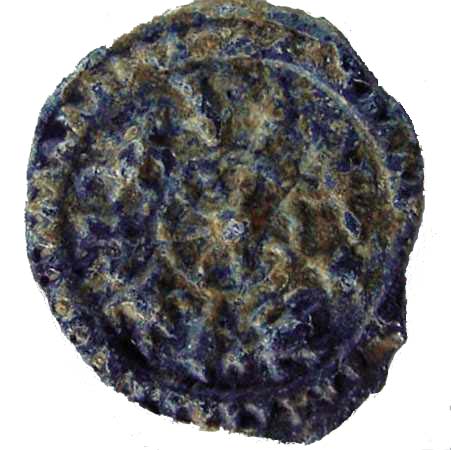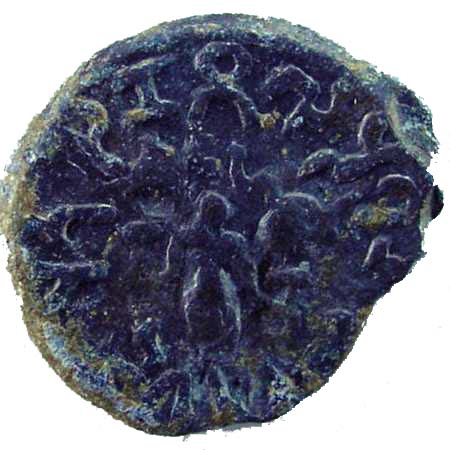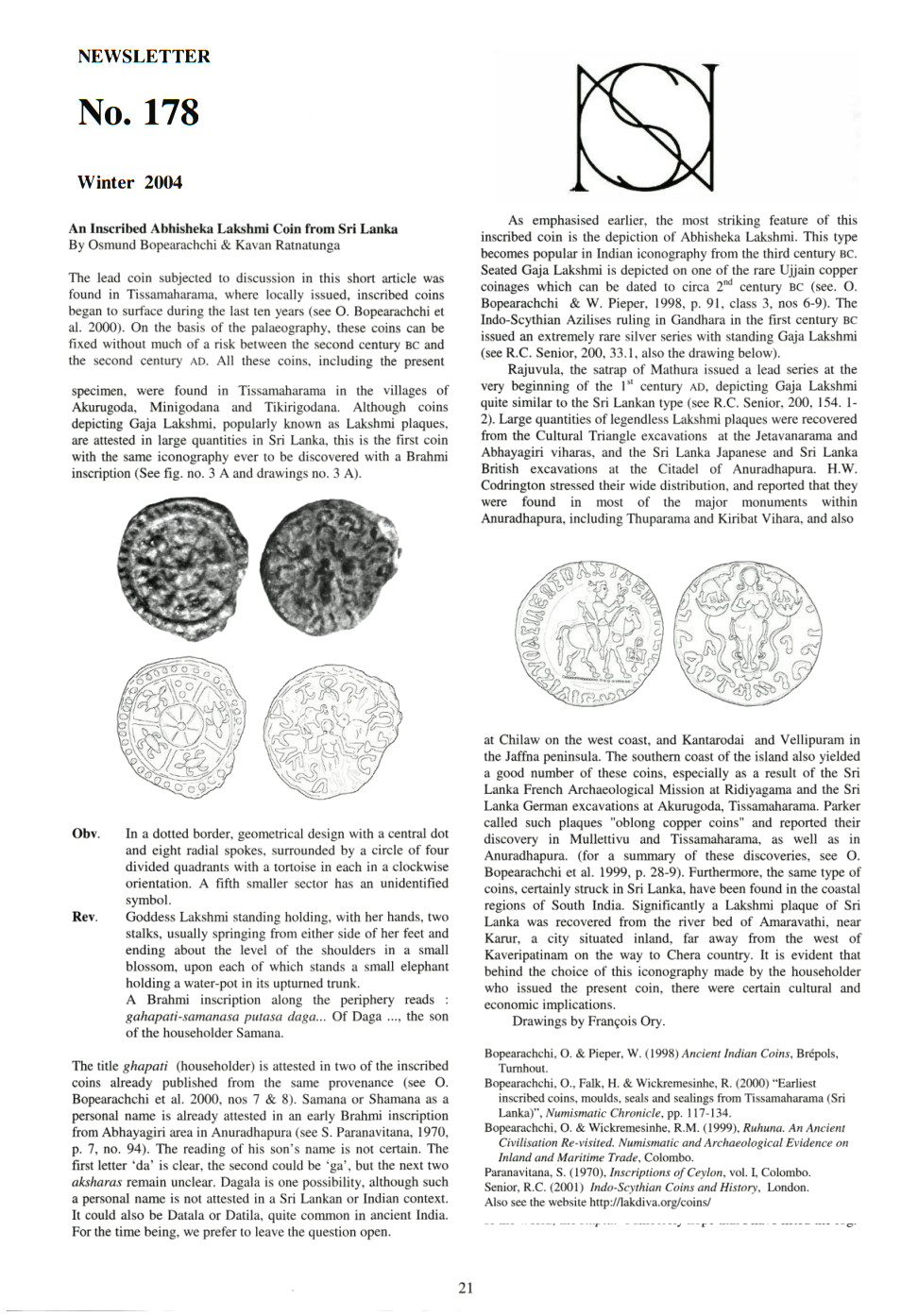| SPECIFICATIONS | ||
| Alloy | Lead | |
| Type | Cast | |
| Diameter | 17.6 mm | |
| Thickness | 1.8 mm | |
| Weight | 2.73 gms | |
| Shape | Circular | |
| Edge | plain | |
| DieAxis | 150° | |


|

| 
| |||||||||||||||||||
| Click to expand and line draw images. | |||||||||||||||||||||

The 15 characters in text are ga ha pa ti sa ma na sa pu ta sa da ga ta ha Joining into words gahapati samanasa puta sada gataha. The word translate from Sinhala as (Householder Samanasa Son made got) i.e Got made (by) Householder Samana's Son. The words gahapati, puta and gataha occur frequently on these lead tokens found in lanka.
The clear legend in ancient Brahmi is inscribed around the periphery anti-clockwise with the bottom of the text is along the outer rim. This convention is unlike in modern or ancient roman tokens.
It is not easy to read the text directly from image. It is useful to use the PhotoShop option Filter-Distort-Polar_Coordinates to transform the outer edge to a straight line. An additional horizontal stretch by pi makes the text more readable as done in images shown above. This operation is much simpler rotating coin and copying each character. Many characters are clear and can be identified uniquely. The others there are incomplete and there are few possible choices. The illumination of the characters sometimes help to recognize some of them.
In the 1999 catalog by Osmund Bopearachchi and Rajah Wickramasinhe titled Ruhuna. An Ancient Civilization Re-visited , these are listed as Inscribed Coins (A.1 - A.39). See for example token A.26. It was obtained directly from the same collector who provided most of the items for that book.
Pankaj Tandon informs me that this token depicts Lakshmi receiving a ritual bath (Sanskrit Abhishekha). Images of deities in temples are given ritual bath periodically in order to ensure that they are kept clean. Traditionally, the abhishekha would involve washing with various auspicious fluids such as milk, ghee, etc, and of course pure water, preferably from the Ganges river. Such coins are known in India, for example, see Azilises, MIG 785. Anyone who has this reference please send me an image
None of the round lead brahmi script inscribed tokens, I know of to be published so far, has the Lakshmi figure which is frequently found on rectangular plaques some with the elephants pouring water on Lakshmi. They all have the railed svastika unique to Lanka coins on the obverse. The four turtles and five smaller radial dolphins images adds much interest to this token or coin.
A Buddhist monk might interpret the wheel with 8-spokes as the Eightfold Path, the radial dolphins as the five precepts and the four turtle images as the 4 Noble truths. This is pure speculation not to be taken seriously, I have no knowledge on Buddhist symbols.
 The discovery in Ruhuna of coin moulds used to cast these coins establishes
that these inscribed Brahmi lead coins were cast in Ancient Lanka.
An article on the coin shown above was published in 2004 January in the
ONS Newsletter 178 co-Authored with Osmund Bopearachchi.
(see image on right)
The discovery in Ruhuna of coin moulds used to cast these coins establishes
that these inscribed Brahmi lead coins were cast in Ancient Lanka.
An article on the coin shown above was published in 2004 January in the
ONS Newsletter 178 co-Authored with Osmund Bopearachchi.
(see image on right)
Two additional fragments of this same coin have been discovered from Akurugoda.One in colection of Brig Siri Munasinghe and the other Fig 214 page 198 in Walburg 2008 book Coins and Tokens from ancient Ceylon. That reports the finding of fragment from the 1st century BCE layer. The esistance of 3 identical specimens justifies this being a rare coin rather than just a token.
The coin was digitally photographed at about 600 dpi and displayed at 350 dpi. It was obtained in 2003 May from Mr A. Ratnayaka a collector in Katharagama, Lanka. The coin had been very mildly cleaned, and shown above after a bit more cleaning to strip out some of the thick patina to make the detail clear.
I thank Hannes of ancientcoins.net for pointing out the photoshop transformation.